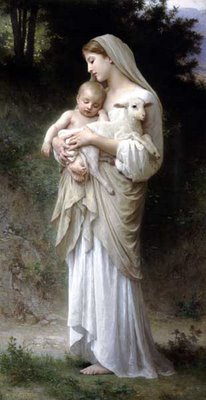Bells Cliparts
 A bell is a simple sound-making device. The bell is a percussion instrument and an idiophone. Its form is usually an open-ended hollow drum which resonates upon being struck. The striking implement can be a tongue suspended within the bell, known as a clapper, a small, free sphere enclosed within the body of the bell, or a separate mallet.
A bell is a simple sound-making device. The bell is a percussion instrument and an idiophone. Its form is usually an open-ended hollow drum which resonates upon being struck. The striking implement can be a tongue suspended within the bell, known as a clapper, a small, free sphere enclosed within the body of the bell, or a separate mallet.Bells are usually made of cast metal, but small bells can also be made from ceramic or glass. Bells can be of all sizes: from tiny dress accessories to church bells weighing tons.
In the Western world, its most classical form is a church bell or town bell, which is hung within a tower and sounded by having the entire bell swung by ropes, whereupon an internal hinged clapper strikes the body of the bell (called a free-swinging bell). A set of bells, hung in a circle for change ringing, is known as a ring of bells.

In the Eastern world, the traditional forms of bells are temple and palace bells, small ones being rung by a sharp rap with a stick, and very large ones rung by a blow from the outside by a large swinging beam. This last technique is employed world-wide for some of the largest tower-borne bells, because swinging the bell itself could damage the tower.
In the Roman Catholic Church and among some High Anglicans, small hand-held bells, called Sanctus or sacring bells, are often rung by a server at Mass when the priest holds high up first the host, and then the chalice immediately after he has said the words of consecration over them (the moment known as the Elevation). This serves to indicate to the congregation that the bread and wine have just been transformed into the body and blood of Christ, or, in the less rigorous Anglican teaching, that Christ is now really present in the elements, and that what the priest is holding up for them to look at is Christ himself.
Japanese religious bells
Japanese Shintoist and Buddhist bells are used in religious ceremonies. Suzu, a homophone meaning both "cool and refreshing," are spherical bells which contain metal pellets that produce sound from the inside. The hemispherical bell is the Kane bell, which is struck on the outside. See also Kane (musical instrument), ja:鈴, ja:梵鐘.
Buddhist bells
Buddhist bells are used in religious ceremonies.
Bells as musical instruments
Some bells are used as musical instruments, such as carillons, (clock) chimes, or ensembles of bell-players, called bell choirs, using hand-held bells of varying tones. A "ring of bells" is a set of 4 to twelve bells or more used in change ringing, a particular method of ringing bells in patterns. A peal in changing ringing may have bells playing for several hours, playing 5,000 or more patterns without a break or repetition.
Ancient Chinese bells
The ancient Chinese had bronze bells called zhong (鐘) which were used as musical instruments. Some of these bells were dated from 2000 to 3600 years old. These bells can each produce two tones. These bells usually have inscriptions on them from which scholars used as references for studying ancient Chinese writings (also known as Bronzeware script). Another related ancient Chinese musical instrument is called qing (磬 pinyin qing4) but it was made of stone instead of metal.
Bellmaking
 The ringing of bells is known as bellringing, and such a bell produces a very loud, clear tone. If the bell is mounted as cast, it is called a "maiden bell" while "tuned bells" are worked after casting to produce a precise note. The traditional metal for these bells is a bronze of about 20% tin. Known as bell metal, this alloy is also the traditional alloy for the finest Turkish and Chinese cymbals. Other materials sometimes used for large bells include brass and iron. The process of casting bells is called bellmaking or bellfounding.
The ringing of bells is known as bellringing, and such a bell produces a very loud, clear tone. If the bell is mounted as cast, it is called a "maiden bell" while "tuned bells" are worked after casting to produce a precise note. The traditional metal for these bells is a bronze of about 20% tin. Known as bell metal, this alloy is also the traditional alloy for the finest Turkish and Chinese cymbals. Other materials sometimes used for large bells include brass and iron. The process of casting bells is called bellmaking or bellfounding.Bell towers
Bells are also associated with clocks, indicating the hour by ringing. Indeed, the word clock comes from the Latin word cloca, meaning bell. Clock towers or bell towers can be heard over long distances which was especially important in the time when clocks were too expensive for widespread use.
In the case of clock towers and grandfather clocks, a particular sequence of tones may be played to represent the hour. One common pattern is called the "Westminster Quarters," a sixteen-note pattern named after the Palace of Westminster which popularized it as the measure used by Big Ben.

Chimes
A variant on the bell is the tubular bell. Several of these metal tubes which are struck manually with hammers, form an instrument named tubular bells or chimes. In the case of wind or aeolian chimes, the tubes are blown against one another by the wind.
Labels: Information About Bells








































